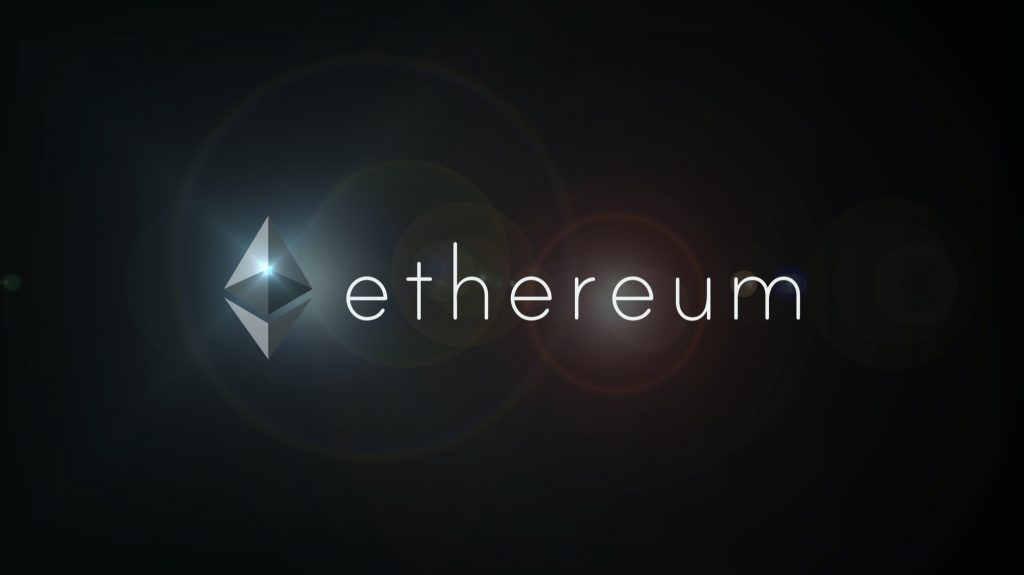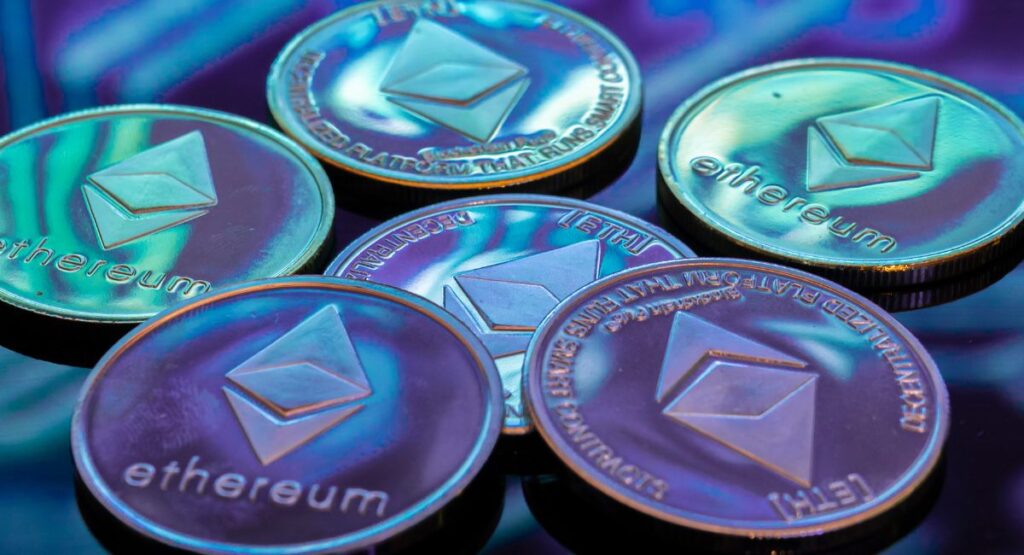What is Ethereum?

Ethereum is a decentralized blockchain platform that enables the creation and execution of smart contracts and decentralized applications (dApps). Unlike Bitcoin, which is primarily designed as a digital currency, Ethereum serves as a multi-functional platform that supports a wide range of use cases, from financial services to gaming and supply chain management.
At its core, Ethereum is a globally distributed computer network that ensures transparency, security, and immutability. The platform operates using its native cryptocurrency, Ether (ETH), which is used to pay transaction fees and as a medium of exchange within the Ethereum ecosystem.
Key Features of Ethereum
- Smart Contracts
- Self-executing agreements stored directly on the blockchain.
- Operate without intermediaries, ensuring transparency and cost efficiency.
- Reliable and tamper-proof, making them ideal for financial transactions, gaming, and more.
- Decentralized Applications (dApps)
- Ethereum supports thousands of dApps across industries like finance, gaming, healthcare, and supply chain.
- Examples include DeFi platforms (Uniswap), NFT marketplaces (OpenSea), and blockchain-based games (Axie Infinity).
- Developers use Ethereum’s coding language, Solidity, to create these applications.
- Ethereum Virtual Machine (EVM)
- Executes smart contracts and powers dApps on the network.
- Provides a secure runtime environment for decentralized computations.
- Ether (ETH)
- The native cryptocurrency of Ethereum, used to pay transaction fees (“gas”).
- Serves as a medium of exchange and a store of value.
Benefits of Ethereum
- Security
Transactions and data are protected by cryptographic algorithms, making tampering nearly impossible. - Decentralization
No central authority controls the network, ensuring censorship resistance and reliability. - Transparency
Every transaction is recorded on a public ledger, enabling full visibility. - Energy Efficiency with Proof-of-Stake (PoS)
The recent upgrade to Ethereum 2.0 reduced energy consumption by approximately 99.95%, aligning with global sustainability goals.
Ethereum 2.0: A Game-Changer
Ethereum’s transition to Ethereum 2.0 marked a pivotal moment in blockchain technology, introducing a range of enhancements aimed at improving scalability, security, and sustainability. These changes addressed many of the limitations faced by Ethereum’s original design, ensuring its continued dominance in the blockchain ecosystem.
Proof-of-Stake (PoS): Efficiency Redefined

Proof-of-Stake replaced the energy-intensive Proof-of-Work (PoW) consensus mechanism, addressing Ethereum’s longstanding energy consumption concerns.
- Environmental Impact
- PoS eliminates the need for high-powered mining hardware, drastically reducing the energy footprint.
- The shift has been lauded as one of the most sustainable upgrades in the blockchain sector, slashing Ethereum’s energy consumption by approximately 99.95%.
- Validator Participation
- Participants, or validators, stake their Ether (ETH) to secure the network and validate transactions.
- Staking ETH incentivizes long-term network loyalty while ensuring alignment of interests among validators.
- Fairer Distribution
- PoS democratizes participation by removing the reliance on expensive mining rigs, allowing a broader range of individuals to secure the network.
- Network Stability
- PoS discourages malicious activities through a penalty mechanism where validators risk losing their staked ETH if they attempt fraud.
Scalability Through Sharding
Sharding is the key innovation introduced with Ethereum 2.0 to address the network’s scalability issues. By dividing the blockchain into smaller segments or “shards,” Ethereum can process a higher volume of transactions simultaneously.
- Increased Transaction Throughput
- Sharding enables parallel processing of transactions, significantly boosting Ethereum’s capacity.
- Estimates suggest Ethereum could process up to 100,000 transactions per second (TPS), a leap from the previous limit of around 30 TPS.
- Lower Network Congestion
- Sharding alleviates network bottlenecks, reducing delays and optimizing transaction speeds.
- Decentralized Data Storage
- Each shard stores a smaller portion of the overall blockchain, making participation accessible to more users with limited storage capacity.
- Enhanced dApp Performance
- With increased capacity, developers can create more complex and resource-intensive decentralized applications without performance trade-offs.
Lower Gas Fees

Gas fees, a common concern for Ethereum users, have been significantly reduced with the Ethereum 2.0 upgrades.
- Optimized Transaction Costs
- By reducing network congestion and improving efficiency, Ethereum 2.0 ensures users pay less for each transaction.
- Accessible for Microtransactions
- Lower fees make Ethereum viable for applications requiring small-value transactions, such as micropayments or in-game purchases.
- Fairer Fee Distribution
- The improved fee mechanism ensures that resources are allocated more equitably, benefiting users and developers alike.
Enhanced Security
Security is a cornerstone of Ethereum 2.0, with multiple layers of improvements ensuring the network remains robust against threats.
- Resilience to Attacks
- The PoS mechanism requires attackers to control a significant portion of the staked ETH, making large-scale attacks financially impractical.
- Adaptive Upgrades
- Enhanced cryptographic protocols protect the blockchain against emerging threats, ensuring long-term security.
- Economic Incentives
- Validators are economically incentivized to act honestly, as fraudulent behavior risks losing their staked ETH.
- Community Participation
- A larger number of validators increases decentralization, making the network more secure and resistant to coordinated attacks.
Use Cases of Ethereum
Ethereum’s versatility continues to expand its adoption across diverse industries, showcasing its potential to revolutionize traditional systems.
1. Decentralized Finance (DeFi)

DeFi has emerged as one of Ethereum’s most significant use cases, democratizing access to financial services.
- Lending and Borrowing
- Platforms like Aave, Compound, and MakerDAO allow users to lend or borrow funds without intermediaries.
- Smart contracts automate interest rates and collateral management, ensuring fairness and efficiency.
- Stablecoins
- Ethereum supports stablecoins like USDT and DAI, which are pegged to fiat currencies, offering stability for transactions.
- Decentralized Exchanges (DEXs)
- Uniswap and SushiSwap enable users to trade cryptocurrencies directly from their wallets, eliminating the need for centralized exchanges.
2. Non-Fungible Tokens (NFTs)
Ethereum is the backbone of the NFT ecosystem, enabling unique digital assets to thrive.
- Digital Art and Collectibles
- Artists and creators mint NFTs on platforms like OpenSea and Rarible, allowing ownership of unique digital items.
- NFTs provide creators with royalties from secondary sales, fostering a sustainable income model.
- Gaming and Virtual Realities
- Games like Axie Infinity and Decentraland tokenize in-game assets, allowing players to trade or sell items.
- Virtual real estate on Ethereum-based metaverses has become a booming market.
- Identity and Ownership
- NFTs are expanding into identity verification and intellectual property, offering a decentralized approach to asset management.
3. Gaming
Ethereum has transformed the gaming industry by introducing new monetization and engagement models.
- Play-to-Earn Games
- Games like Axie Infinity reward players with cryptocurrency for participating, creating a new earning opportunity.
- Tokenized assets allow players to fully own and trade in-game items, blurring the lines between gaming and real-world economies.
- Cross-Platform Interoperability
- Ethereum-based tokens can be used across multiple games, creating a unified gaming ecosystem.
- Provably Fair Gaming
- Smart contracts ensure fairness by making game mechanics transparent and immutable.
4. Supply Chain Management

Ethereum’s blockchain ensures accountability and transparency in global supply chains.
- Real-Time Tracking
- Smart contracts monitor goods in transit, providing real-time updates to stakeholders.
- Fraud Prevention
- Blockchain records ensure authenticity, reducing counterfeit goods and fraudulent practices.
- Cost Savings
- Automation of processes like invoicing and payments minimizes administrative overhead.
5. Healthcare
The healthcare sector benefits immensely from Ethereum’s ability to securely store and share sensitive data.
- Patient Records
- Blockchain ensures medical records are tamper-proof and easily accessible by authorized parties.
- Drug Supply Chain
- Tracks pharmaceuticals from production to delivery, combating counterfeit drugs.
- Clinical Trials
- Smart contracts manage trial data, ensuring transparency and adherence to protocols.
Ethereum’s transition to Ethereum 2.0 not only addresses existing challenges but also sets the stage for further innovation. Its broad range of applications showcases its transformative potential, making it a cornerstone of the blockchain ecosystem.
Comparison with Other Blockchains
| Feature | Ethereum | Bitcoin | Solana |
| Primary Function | dApps and smart contracts | Digital currency | High-speed transactions |
| Consensus Mechanism | Proof-of-Stake (PoS) | Proof-of-Work (PoW) | Proof-of-History (PoH) |
| Transaction Speed | ~30 TPS | ~7 TPS | ~65,000 TPS |
| Ecosystem Size | Extensive | Limited | Growing |
| Energy Efficiency | Highly efficient with PoS | Energy-intensive | Efficient |
Ethereum vs. Traditional Systems
Ethereum differs significantly from traditional centralized systems in several ways:
| Feature | Ethereum | Traditional Systems |
| Control | Decentralized network | Centralized authorities |
| Transparency | Public ledger accessible to all | Restricted access to transaction records |
| Intermediaries | Eliminates intermediaries with smart contracts | Requires intermediaries for transactions |
| Security | Cryptographically secured, immutable records | Vulnerable to single points of failure |
| Innovation | Open ecosystem for developers | Restricted by proprietary systems |
Ethereum’s innovative design has made it a cornerstone of the blockchain ecosystem. It empowers developers to build applications that are transparent, secure, and efficient, unlocking new possibilities in finance, gaming, healthcare, and beyond. Its ability to adapt and evolve ensures its continued relevance in an ever-changing technological landscape.
FAQs
What is Ethereum used for?
Ethereum is a blockchain platform that supports decentralized applications (dApps), smart contracts, and cryptocurrency transactions. It is widely used in industries like finance, gaming, supply chain management, and healthcare. Popular use cases include decentralized finance (DeFi), non-fungible tokens (NFTs), and blockchain-based games.

